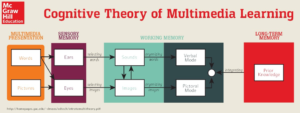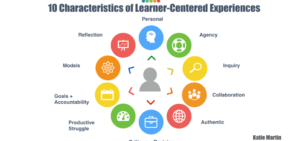Using technology that is “in sync with how people learn” (Mayer, 2014) is what really resonated with me when I began to think about how historical uses of multimedia influence technology use today. As somebody who has never been naturally gifted or knowledgeable when it comes to technology, this idea was really powerful. I have found that when incorporating technology into assignments it has felt forced. I now realize that I was unknowingly using a technology centered approach. As I thought about these articles and video, I began to understand how technology could be used to aid learning in a more organic and useful way. Throughout the education program, one thing that has been repeatedly stressed is the importance of relationships and using a learner-centered approach in teaching. I had never heard this term used to relate to technology, however, until now. Non-digital technologies are used daily in a classroom setting in order to promote student learning, participation, and understanding of concepts, so by using technology with those goals in mind, students will be better able to relate to, and comprehend new information.
I have come to understand that students learn best when they are able to become engaged in their learning. When digital technologies are used with a learner-centered approach, it allows students to become actively engaged with their learning, similarly to how non-digital multimedia approaches historically allow for better results. This approach would allow opportunity for each student to find interest in a topic because it is adapted to promote learning because it is designed around how the human mind naturally works.
I have struggled with technology in the past because I have attempted to use it to “provide access to information” (Mayer, 2014), rather than to “aid human cognition” (Mayer, 2014). I can think back to one experience in school when this was not the case. I did not realize at the time why all of a sudden, I liked using technology for an assignment, but it was because it was using a learner centered approach.
In high school, we did a book report as a podcast and the teacher gave feedback using the same format. I found this allowed for a really personalized approach which allowed for a lot of flexibility, and has been something I thought back on when lesson and unit planning in the education program. I now realize that there are ways other assignments could have been easily adapted to allow students to better relate to and understand the learning outcomes using a learner centered approach to technology. I am eager to learn more ways to use technology to inform and engage students.


References
Mayer, R. E. (2014). The Cambridge Handbook of Multimedia Learning. Retrieved from https://doi-org.ezproxy.library.uvic.ca/10.1017/CBO9781139547369